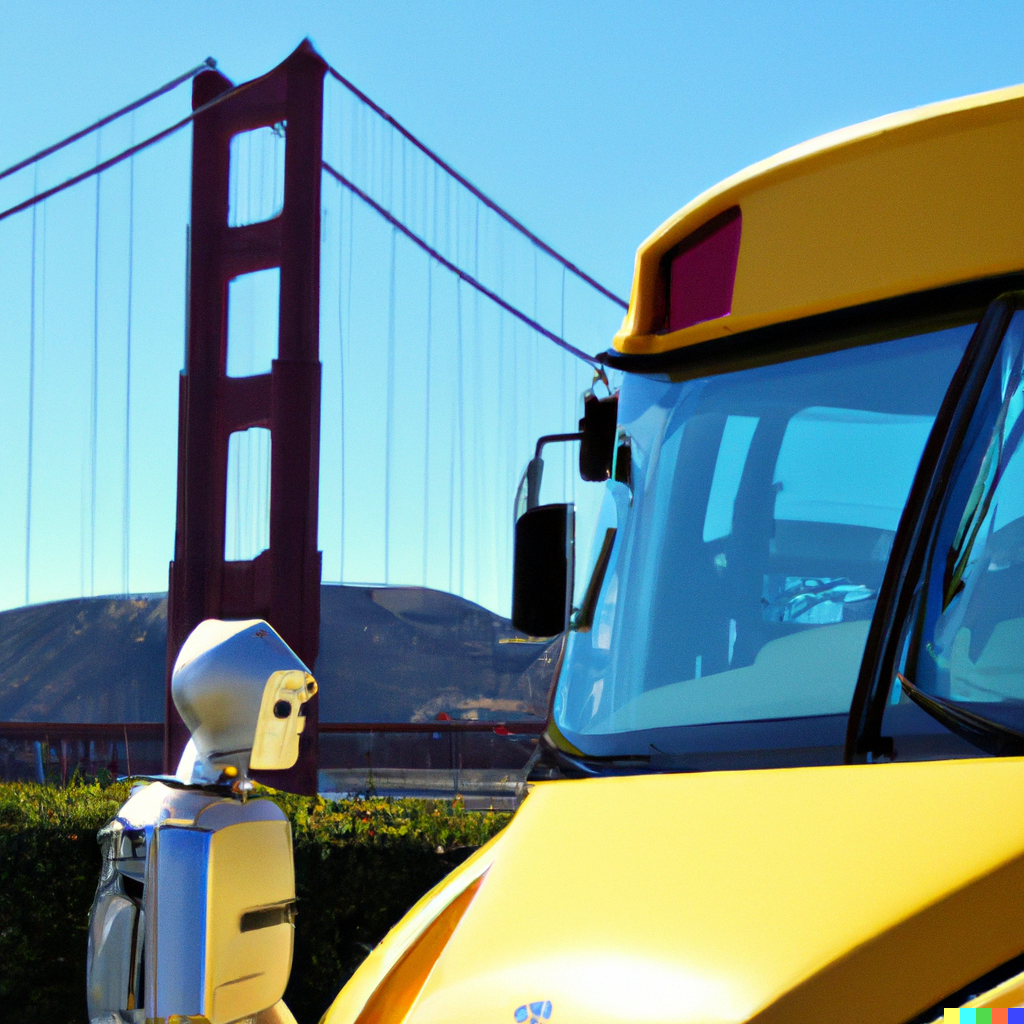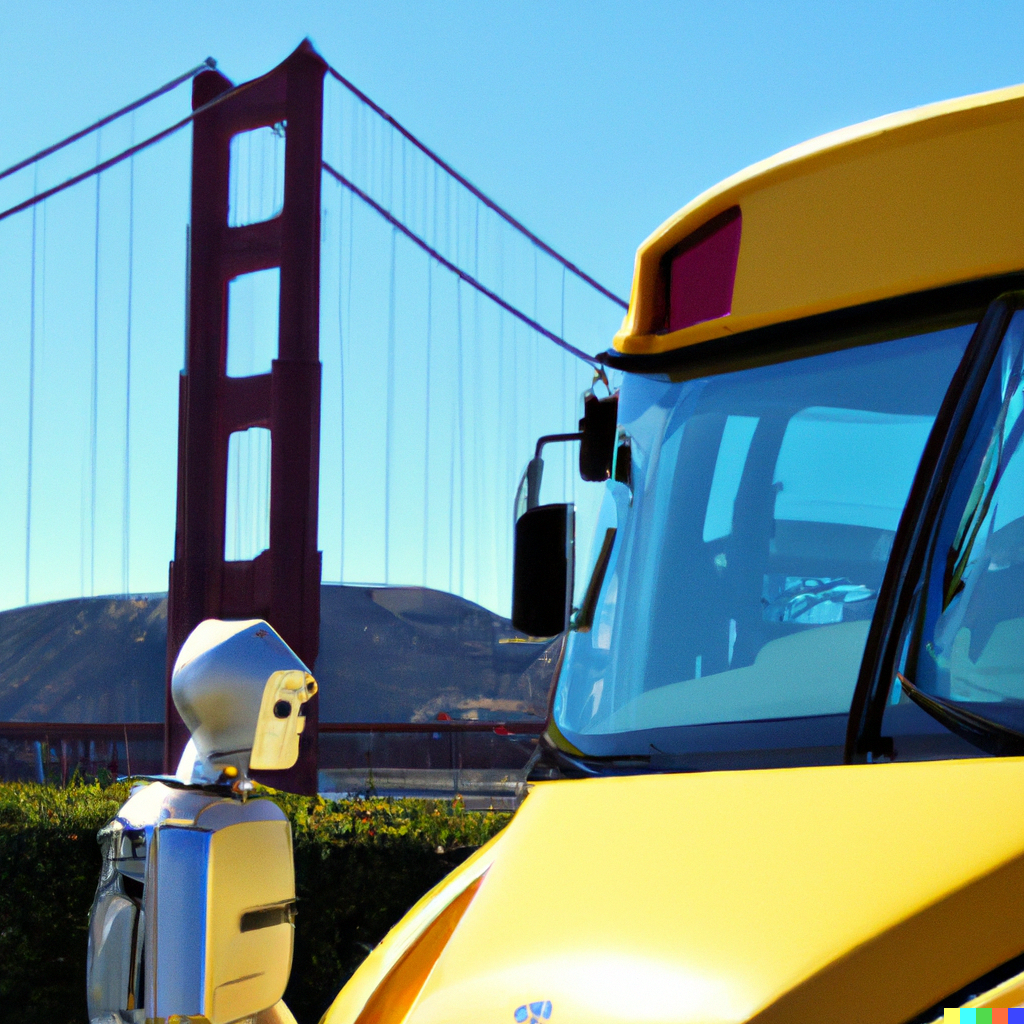
How San Francisco shapes the future of tourism and robotaxis
February 28th, 2023
by Alex Bainbridge
Publicly available autonomous vehicles (e.g. robotaxis) are here. My Autoura service is available (for early testing) operating tourism experiences in four US cities – San Francisco, Las Vegas, Austin & Phoenix, using publicly available robotaxis. We have no vehicles ourselves.
I have been disappointed that the tour bus sector hasn’t grasped the incoming disruption that comes not only from autonomous vehicles, but also that it is well resourced companies including Microsoft (Cruise), Google (Waymo) & Amazon (Zoox) as their disruptors. However I have been over that for a while and we are not really, as a business, structured around transition anymore. That ship has sailed.
To me, the most viable transition window closed in 2020 or so. Any serious tour bus > autonomous vehicle transition project needs a new autonomous vehicle optimised around tourism & hospitality, rather than around mobility (like the robotaxis are). Those tourism vehicles are coming but too late for the existing tour bus operators to acquire & use. They are going to be left using their full size tour buses to compete with family sized robotaxis, a not impossible fight, but certainly not business as usual.
If you haven’t watched this video previously, I outlined this scenario last year:
A new window of opportunity
However, I have spotted an incoming problem for the autonomous vehicle mobility platforms, and one that they can’t solve by themselves, and one they must solve. Maybe, just maybe, I can see how to get the incumbent tour bus operators back in the game. Let me show you my workings and see if you agree.
Currently San Francisco is a two mobility platform market – Uber & Lyft.
There are three new mobility platforms joining the local market:
- Cruise (GM/Microsoft/Honda)
- Waymo (Alphabet/Google)
- Zoox (Amazon)
Two of these three are already available in San Francisco (Cruise & Waymo), while Zoox has said they will launch San Francisco after their initial launch in Las Vegas.
What happens when we have a five mobility platform market?
San Francisco will be the first five mobility platform market in the US. Maybe the market will support five mobility platforms just fine, but each of these platforms has a point to prove.
Uber & Lyft will want to demonstrate that they can compete against autonomous mobility platforms. They may even want to partner with the autonomous vehicle platforms as distributors, although this doesn’t reduce the market as Cruise / Waymo / Zoox will continue marketing direct to consumers.
The three autonomous vehicle mobility platforms will each want to show their service is attractive to consumers. Failure to achieve this will make any scale up conversations troublesome. You can’t fail to scale in San Francisco at the same time as convincing investors that you should be scaling to fifty cities.
So we have a battle, a battle none of the five can afford to lose.
What will be the battleground?
San Francisco is a tourism city. Waymo has already noted how much usage they have from tourism (& leisure).
SF residents love riding for entertainment purposes (27% of trips) but also really enjoy Waymo One for more than the usual ride-hailing, with 26% of trips in SF used specifically for shopping and running errands. Our multi-stop feature helps make it easy (and never gets annoyed)!
— Waymo (@Waymo) September 12, 2022
“SF residents love riding for entertainment purposes (27% of trips) but also really enjoy Waymo One for more than the usual ride-hailing, with 26% of trips in SF used specifically for shopping and running errands”
The autonomous vehicle mobility platforms, to win, will have to shift from horizontal “mobility platform” marketing, to vertical marketing including “tourism mobility”. i.e. competing on individual use cases rather than pitching general mobility. One of the major use cases they will have to focus on is tourism.
- Google will be fine with this as they are already a strong player at the top of the tourism consumer funnel
- Amazon will work it out, although they should not have shut down Amazon Explore
- Microsoft with Bing Chat (GPT), is equally well positioned, if Cruise take advantage of their investor’s tech
i.e. each have strengths they can call upon.
What can tour bus operators do today?
This is obviously a problem the mobility platforms need help with in the future, although may not want to engage on today.
We as tour operators can solve this ahead of time by designing and operating experiences using our extensive knowledge on what works in the San Francisco market. We can spend the next two years testing and fine tuning these experiences. Then when the mobility platform companies realise their absolute need to win San Francisco, we will be ready to support them and the first to be called for help.
While not a complete transition solution for tour bus operators, this does perhaps give us some positive news and something actionable we can focus on. Certainly better than hoping that tour buses remain popular in the autonomous vehicle era, or thinking that these problems will somehow go away, or that they can be addressed later.
For platforms like my own, that operate tourism & hospitality experiences using publicly available robotaxis, we are ready to serve mobility platforms or incumbent tour bus operators unilaterally or collaboratively. See https://www.autoura.com/mobility
ps – Online Travel Agents (OTAs), airlines or hotel chains can assist with this go to market positioning too, it doesn’t have to be the local tour operators.
Image: Dall-e AI

This content is protected by copyright. Link sharing is encouraged but duplication and redistribution is illegal


If you prefer to comment via LinkedIn, here is the thread
https://www.linkedin.com/posts/alexbainbridge_how-san-francisco-shapes-the-future-of-tourism-activity-7036263912262008832-6cGv